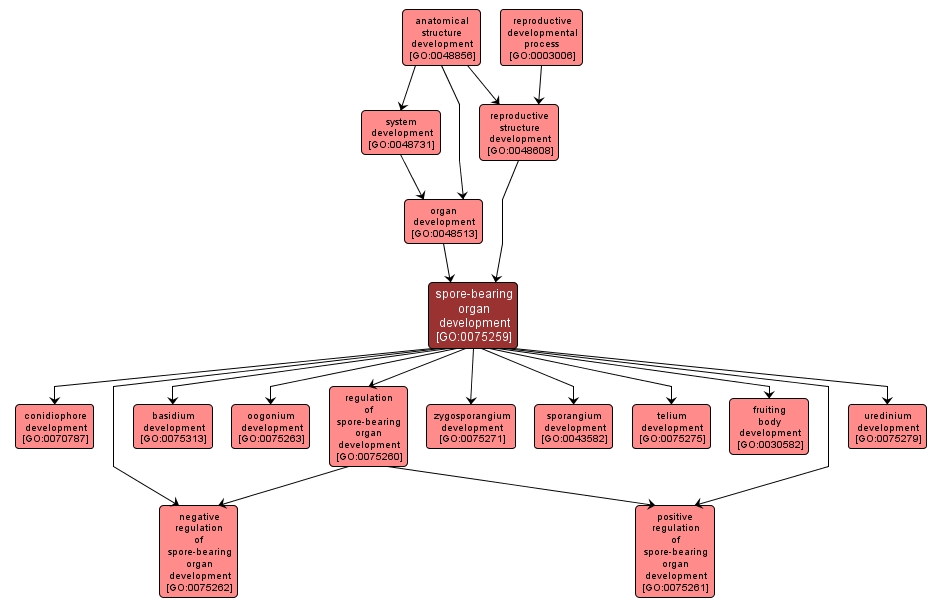GO TERM SUMMARY
|
| Name: |
spore-bearing organ development |
| Acc: |
GO:0075259 |
| Aspect: |
Biological Process |
| Desc: |
The process whose specific outcome is the progression of a spore-bearing organ over time, from its formation to the mature structure. A spore-bearing organ is an anatomical structure that produces new spores. |
Synonyms:
- fruiting structure development
|
|

|
INTERACTIVE GO GRAPH
|














